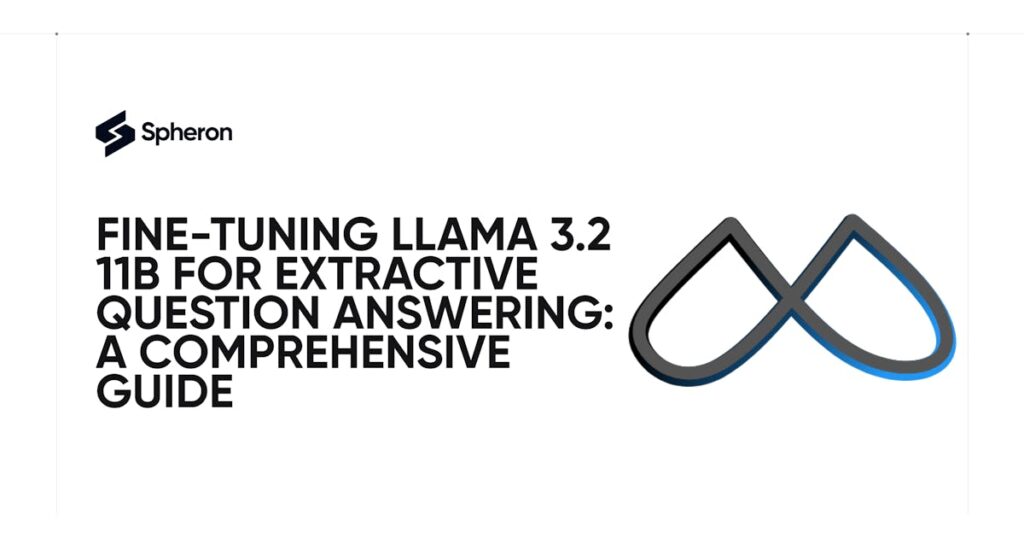Massive Language Fashions (LLMs) are highly effective instruments that may carry out a variety of pure language processing duties. Nevertheless, on account of their generic and broadly targeted coaching, they could not all the time carry out optimally on particular duties. High-quality-tuning is a way that permits us to adapt a pre-trained LLM to a selected job, similar to extractive query answering, with out altering the unique weights. On this article, we’ll discover learn how to fine-tune Llama 3.2 11B utilizing the Q-LoRA method and display its efficiency enhance on the SQuAD v2 dataset.
What’s LoRA?
LoRA (Low-Rank Adaption) is a way used so as to add new weights to an present mannequin to switch its habits with out altering the unique weights. It includes including new “adapter” weights that modify the output of sure layers, that are modified through the coaching course of whereas the unique weights stay the identical. By freezing the unique weights, LoRA ensures that the mannequin retains its pre-trained information whereas including new, task-specific capabilities by means of the adapter weights.
Defining the Experiment
We’ll fine-tune Llama 3.2 11B for extractive query answering utilizing the SQuAD v2 dataset on this experiment. The purpose is to coach the mannequin to extract particular parts of textual content that instantly reply a consumer’s query with out summarizing or rephrasing.
System Setting
This experiment was run on a Google Colab platform with an A100 GPU. The code is written in Python and makes use of the Hugging Face Transformers library.
Putting in Packages
!pip set up -U transformers peft bitsandbytes datasets trl consider bert_score
Loading Knowledge
We’ll use the SQuAD v2 dataset for coaching and analysis.
from datasets import load_dataset
ds = load_dataset("squad_v2")
print(ds)
Output:
DatasetDict({
practice: Dataset({
options: ['id', 'title', 'context', 'question', 'answers'],
num_rows: 130319
})
validation: Dataset({
options: ['id', 'title', 'context', 'question', 'answers'],
num_rows: 11873
})
})
Knowledge Preparation
We’ll cut up the dataset into coaching, validation, and check units and convert the samples right into a format appropriate for Llama.
num_training_samples = 15000
num_test_samples = 750
num_validation_samples = 1000
training_samples = ds['train'].choose([i for i in range(num_training_samples)])
test_samples = ds['train'].choose([i for i in range(num_training_samples, num_training_samples+num_test_samples)])
validation_samples = ds['validation'].choose([i for i in range(num_validation_samples)])
def convert_squad_sample_to_llama_conversation(pattern):
return {"textual content": sample_conversation, "messages": messages, "reply": reply}
conversation_training_samples = training_samples.map(convert_squad_sample_to_llama_conversation)
conversation_test_samples = test_samples.map(convert_squad_sample_to_llama_conversation)
conversation_validation_samples = validation_samples.map(convert_squad_sample_to_llama_conversation)
Mannequin Preparation
We’ll load the Llama 3.2 11B mannequin with 4-bit quantization and arrange the LoRA config.
from transformers import AutoTokenizer, AutoModelForCausalLM, BitsAndBytesConfig
model_name = "meta-llama/Llama-3.2-11B-Imaginative and prescient-Instruct"
tokenizer = AutoTokenizer.from_pretrained(model_name)
tokenizer.padding_side = "left"
tokenizer.pad_token = tokenizer.eos_token
bnb_config = BitsAndBytesConfig(
load_in_4bit=True,
bnb_4bit_quant_type='nf4',
bnb_4bit_compute_dtype=torch.float16,
bnb_4bit_use_double_quant=True
)
mannequin = AutoModelForCausalLM.from_pretrained(
model_name,
quantization_config = bnb_config,
device_map="auto"
)
mannequin.config.pad_token_id = tokenizer.pad_token_id
mannequin.config.use_cache = False
from peft import LoraConfig
rank = 128
alpha = rank*2
peft_config = LoraConfig(
r=rank,
lora_alpha=alpha,
lora_dropout=0.05,
bias="none",
task_type="CAUSAL_LM",
target_modules=['k_proj', 'q_proj', 'v_proj', 'o_proj', 'gate_proj', 'down_proj', 'up_proj']
)
Coaching
We’ll use the SFTTrainer from the trl library to coach the mannequin.
from transformers import TrainingArguments
from trl import SFTTrainer
training_arguments = TrainingArguments(
output_dir=model_checkpoint_path,
optim='paged_adamw_32bit',
per_device_train_batch_size=8,
gradient_accumulation_steps=4,
log_level='debug',
evaluation_strategy = "steps",
save_strategy='steps',
logging_steps=8,
eval_steps=8,
save_steps=8,
learning_rate=1e-4,
fp16=True,
num_train_epochs=4,
max_steps=120,
warmup_ratio=0.1,
load_best_model_at_end = True,
overwrite_output_dir = True,
lr_scheduler_type='linear',
)
coach = SFTTrainer(
mannequin=mannequin,
train_dataset=conversation_training_samples,
eval_dataset=conversation_test_samples,
peft_config=peft_config,
dataset_text_field='textual content',
max_seq_length=1024,
tokenizer=tokenizer,
args=training_arguments
)
Analysis
We’ll consider the mannequin utilizing the bert-score and exact-match metrics.
from consider import load
bert_model = "microsoft/deberta-v2-xxlarge-mnli"
bertscore = load("bertscore")
exact_match_metric = load("exact_match")
def get_bulk_predictions(pipe, samples):
def get_base_and_tuned_bulk_predictions(samples):
conversation_validation_samples = conversation_validation_samples.map(get_base_and_tuned_bulk_predictions, batched=True, batch_size=20)
base_predictions = conversation_validation_samples['base_prediction']
solutions = conversation_validation_samples['answer']
base_validation_bert_score = bertscore.compute(predictions=base_predictions, references=solutions, lang="en", model_type=bert_model, gadget="cuda:0")
baseline_exact_match_score = exact_match_metric.compute(predictions=base_predictions, references=solutions)
trained_predictions = conversation_validation_samples['trained_prediction']
solutions = conversation_validation_samples['answer']
trained_validation_bert_score = bertscore.compute(predictions=trained_predictions, references=solutions, lang="en", model_type=bert_model, gadget="cuda:0")
tuned_exact_match_score = exact_match_metric.compute(predictions=trained_predictions, references=solutions)
Outcomes
The coaching course of took round 1 hour on an A100 GPU. The outcomes present a big enchancment within the mannequin’s efficiency on the validation set.
| Metric | Base Mannequin | Tuned Mannequin |
| BERT Rating | 0.6469 | 0.7505 |
| Actual Match | 0.116 | 0.418 |
Conclusion
This text demonstrated learn how to fine-tune Llama 3.2 11B for extractive query answering utilizing the Q-LoRA method. The outcomes present a big enchancment within the mannequin’s efficiency on the validation set, with a rise within the BERT and precise match scores. This system might be utilized to different duties and fashions, and we hope that this text serves as a complete information for future analysis and purposes.

